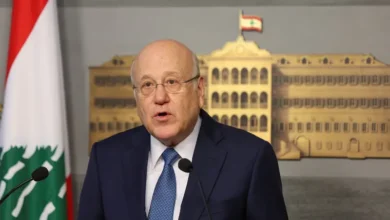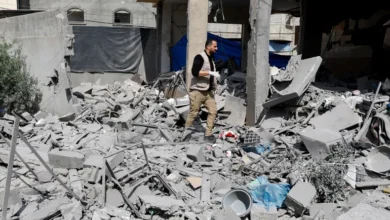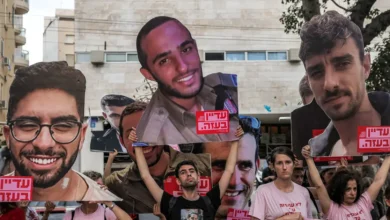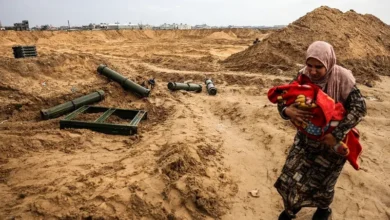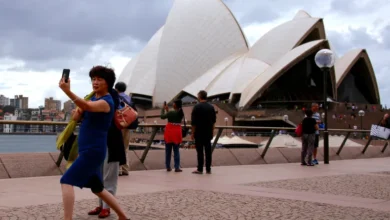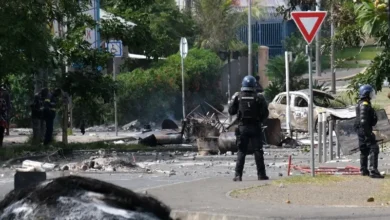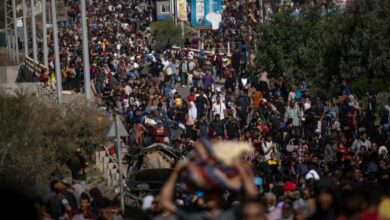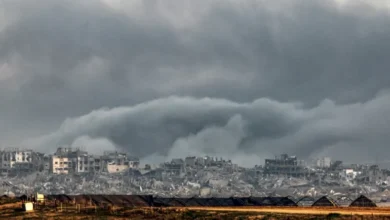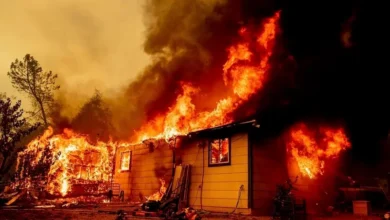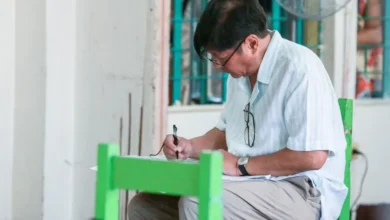Palestinians in Gaza desperate to travel abroad for life-saving treatment
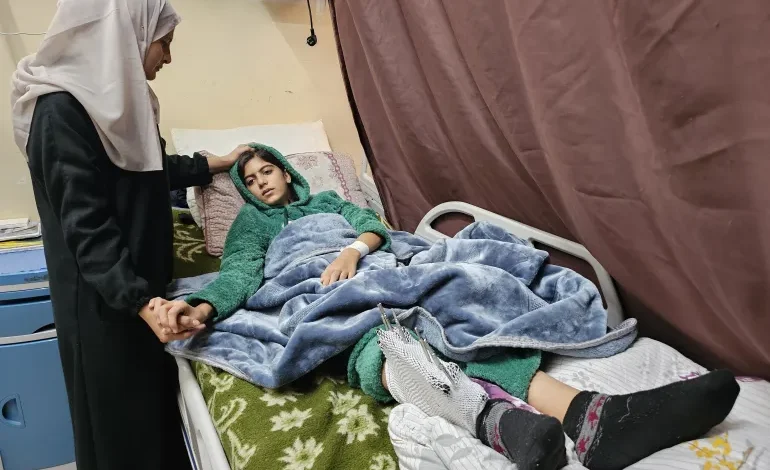
In a small apartment in Khan Younis, surrounded by a war-torn landscape as far as the eyes can see, Abeer al-Awady counts the minutes until the much-anticipated ceasefire.
Her daughter Hanaa’s life depends on it.
The 15-year-old lets out a piercing cry whenever Abeer lifts the blanket shielding her face. Even the faintest glimmer of light triggers excruciating pain in the teenager’s sensitive, swollen eyes, leaving Abeer with no choice but to heed her daughter’s agonised pleas to be covered again.
Beneath the blanket lies a face marked by the relentless toll of cancer. A red mass protrudes from her left eye, her head appears shrunken, and her frail arms barely move. Her weakened voice and constant cries tell of the pain she’s endured since her diagnosis three months ago.
Abeer prays that the Rafah crossing, which Gaza shares with Egypt and has been sealed shut by Israel since its ground operation in the southernmost region of the enclave in May, opens as soon as the ceasefire comes into effect early Sunday. “I don’t know how much longer Hanaa will survive,” she said.For thousands of wounded Palestinians in Gaza and patients like Hanaa, the ceasefire agreed to by the Israeli cabinet on Saturday after much political tension, is more than a diplomatic milestone; it’s a matter of survival. The Rafah crossing is expected to open as part of the deal, allowing Palestinians in Gaza to leave for medical treatment.
Death sentence
For Abeer, who also has two sons, the Rafah crossing is their family’s only hope to hold onto her Hanaa. “Hanaa diagnosis’ felt like a death sentence for our family,” said Abeer, her voice breaking as tears streamed down her face. “But to watch her condition worsen daily, with nothing that we or anyone in Gaza can offer, is another level of torment.”
The family’s ordeal began when Hanaa’s eyes swelled, prompting a visit to an eye doctor who referred her immediately to Nasser Hospital in Khan Younis. There, tests confirmed the devastating news: Hanaa had cancer, with multiple tumours in her head.
Abeer recounted how her once-energetic daughter, despite being born with cerebral atrophy and having a speech impairment, had thrived with sharp hearing, clear vision, and a zest for life. But since her diagnosis, Hanaa has lost her sight completely, and her hearing is rapidly deteriorating. A massive tumour in her throat has also meant she’s unable to eat, and she now relies on a feeding tube connected to her stomach.
For three months, Hanaa has received no cancer treatment due to the lack of medical supplies in Gaza. “All she gets are painkillers to help her sleep,” Abeer said. “If it weren’t for this war and the blockade, Hanaa could have started treatment and recovered. Instead, her condition has worsened, robbing her of her senses and leaving her motionless.”
The family’s ordeal began when Hanaa’s eyes swelled, prompting a visit to an eye doctor who referred her immediately to Nasser Hospital in Khan Younis. There, tests confirmed the devastating news: Hanaa had cancer, with multiple tumours in her head.
Abeer recounted how her once-energetic daughter, despite being born with cerebral atrophy and having a speech impairment, had thrived with sharp hearing, clear vision, and a zest for life. But since her diagnosis, Hanaa has lost her sight completely, and her hearing is rapidly deteriorating. A massive tumour in her throat has also meant she’s unable to eat, and she now relies on a feeding tube connected to her stomach.
For three months, Hanaa has received no cancer treatment due to the lack of medical supplies in Gaza. “All she gets are painkillers to help her sleep,” Abeer said. “If it weren’t for this war and the blockade, Hanaa could have started treatment and recovered. Instead, her condition has worsened, robbing her of her senses and leaving her motionless.”
Patients dying every day
According to Abu Salmiya, there are 20,000 patients and wounded Palestinians in Gaza in need of treatment, of whom 12,000 are in dire conditions. “Nearly 6,000 people wounded by the war need urgent treatment in facilities abroad. These include roughly 4,000 amputees, and more than 2,000 cases sustaining serious injuries to their backbone and their spinal cord, resulting in crippling and paralysis,” he said.
In a speech delivered at a United Nations Security Council meeting on January 3, Dr Rik Peeperkorn, World Health Organization (WHO) representative for the West Bank and Gaza, said more than a quarter of the 105,000 civilians injured during the 15-month Israeli pounding of Gaza face “life-changing injuries”. Describing hospitals as “battlegrounds”, UN High Commissioner for Human Rights Volker Turk quoted WHO figures of 654 attacks on healthcare facilities, leading to 886 deaths and 1,349 injuries.
